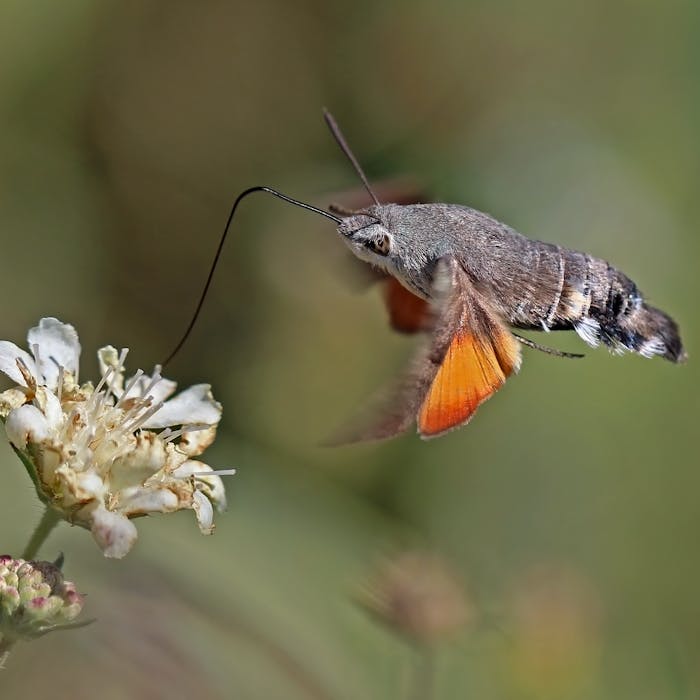
Hummingbird hawk-moth - Britain's frenetic flier
On sunny late afternoons in the summer, gardeners in Britain may observe an intriguing creature hovering around their flowers, and feeding on nectar with a long tongue. But are there really small hummingbirds in this country? Well, not quite, but nearly!
This creature is the hummingbird hawk-moth - a very large, day-flying moth with a wingspan of about two inches (50-58mm).
It has a brown, white-spotted abdomen, brown forewings and orange hindwings.
The hummingbird hawk-moth is very swift on the wing, and an expert at hovering. Its wings beat so rapidly that they produce an audible hum, and are only visible as a blur. The darting movement from one flower to the next, with the long proboscis uncoiled, completes the illusion of a hummingbird.
The hummingbird hawkmoth is abundant and to be found visiting us in Britain from its other residences all around the Mediterranean countries (and across Central Asia to Japan). Its migratory habits are well-documented, with many thousands regularly migrating northwards in Europe in the spring to sup on our flowers here in the UK, returning south to warmer climes in the autumn. The numbers which reach our shores can vary greatly between years, and it's even thought that some of the moths may be resident all year in Britain now.
The moth can be seen on the wing from May to September. The purple flower Verbena bonariensis is one of the garden plants that are most likely to attract this interesting moth, which has a remarkably good memory. Once you've spotted one, you are likely to see it again at the same flowerbed every day at around the same time.
The moth's caterpillars can be found from June to October, but most frequently in August. They eat Lady's Bedstraw (Galium verum), Hedge Bedstraw (Galium album) and Wild Madder (Rubia peregrina). The adults have also been seen laying eggs on Red Valerian (Centranthus ruber).
The caterpillars overwinter as adults in unheated outbuildings and in crevices and holes in walls and trees, pupating in a cocoon spun close to the ground, among the foliage of the foodplant or in leaf litter to emerge in the spring.
Further reading
Links to external websites are not maintained by Bite Sized Britain. They are provided to give users access to additional information. Bite Sized Britain is not responsible for the content of these external websites.
